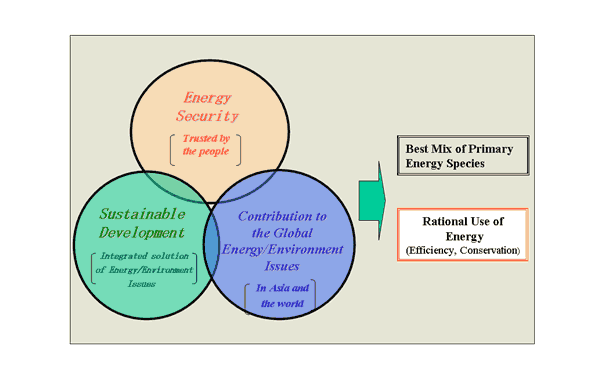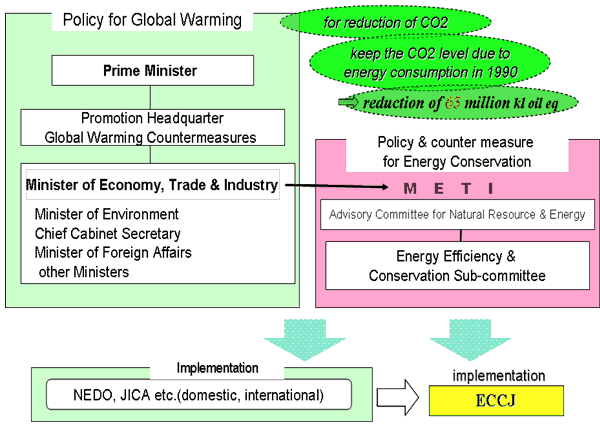New Principle of Energy Policy
(“New Energy Strategy” by METI, June 2006 )

| AEEC Home | Training Index | Index | Top | Previous | Next |
| ECCJ / Text | India |
New Principle of Energy Policy
(“New Energy Strategy” by METI, June 2006 ) |
 |
Dealing with Global Warming by the Government |
||
Government Policy and Procedure:
Consolidation of Laws, etc.: Revision of Energy Conservation Law<2002.6, 2006.4> Revision of Law of Promotion of Renewable Energy Usage<2002.6> |
Kyoto Commitment |
||||||||||
Today GHG emission level is already over the 1990 level, so Japanese government estimates that 12% reduction of GHG should be needed. Almost 90% of Japan’s GHG is energy-oriented CO2. →Energy conservation is expected as a effective measure. revised < Kyoto Commitment achieving plan by Japanese Government --- April 28, 2005 >
|
Policy-making Structure for Energy Conservation in Japan |
 |
| 13/39 Next |
| AEEC Home | Training Index | Index | Top | Previous | Next |